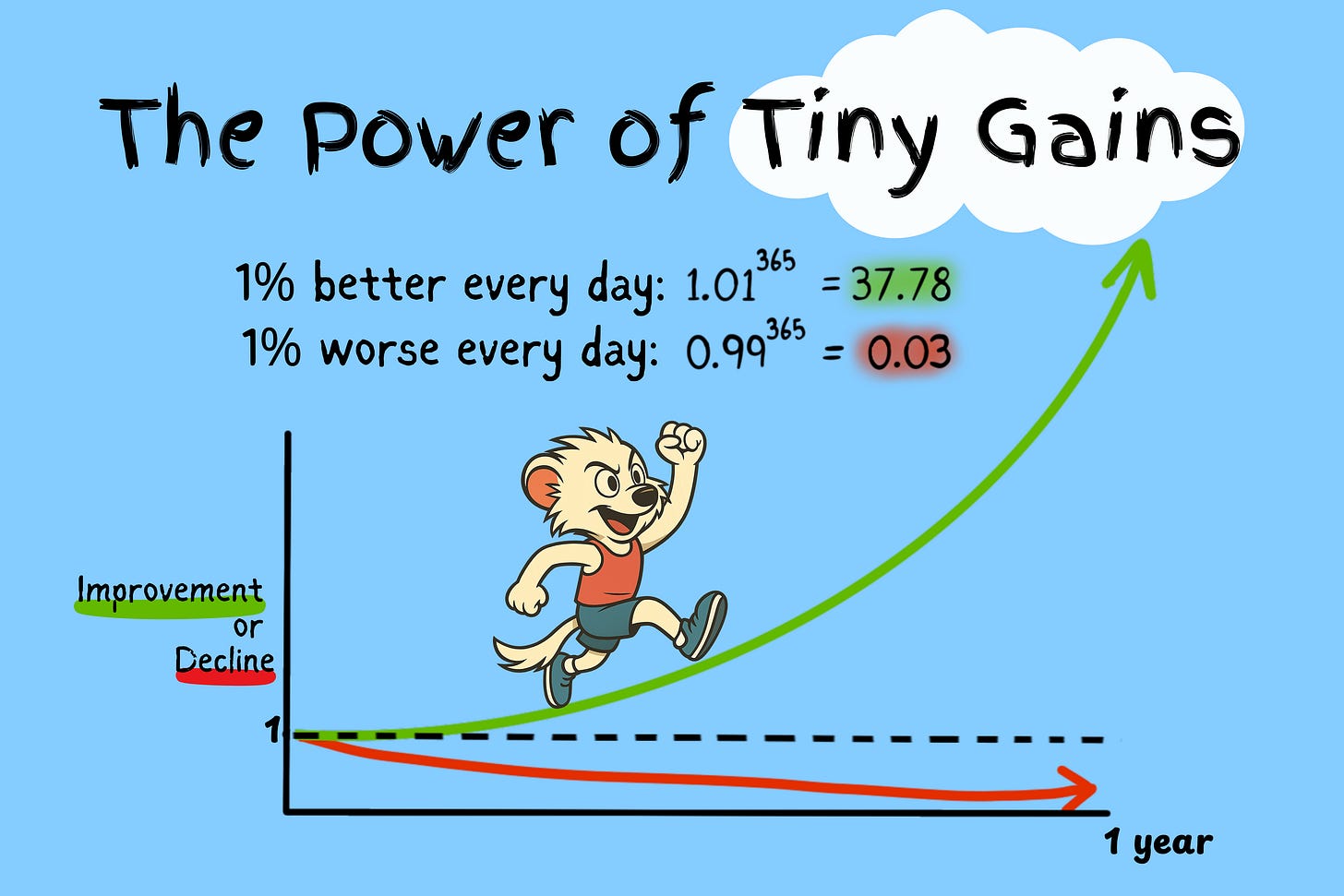How to escape all-or-nothing thinking with the 1 percent rule
A simple mindset shift that helps ADHD brains make steady progress without the overwhelm or guilt.
All-or-nothing thinking loves to tell our ADHD brains that if we can’t clean the whole house, finish the entire project, or run the full 5 km… then why bother at all? So we freeze. We scroll. We stew in guilt. And somehow, the day ends right where it started, with the same tasks staring back at us.
That mindset has wrecked more of my days than I can count. But one idea has helped me get out of it. Not perfectly and not always, but enough to keep moving.
It’s the 1 percent rule.
The idea is simple: forget perfect, forget big leaps. Just aim for a tiny gain each time you touch the task. One shelf tidied. One paragraph written. One set of push-ups done. It might not feel like much, but do that enough times and even the hardest goals start to shift.
It also quiets the guilt. The kind that says you’re never doing enough, or that you should be further along by now. With one percent in mind, you don’t have to do it all. You just do one thing. And that one thing is enough. It breaks the all-or-nothing trap and gives you a way to show up without the pressure.
Long-term goals: slow tweaks that stack up
The 1 percent lens isn’t just for quick chores. It’s made for the big, blurry goals that usually send us spiraling into research rabbit holes or perfectionist panic. The kind of goals that feel too overwhelming to start. But when you break them down into tiny daily moves, you build momentum without needing the perfect plan up front.
Take something like “get healthier.” Instead of drafting a color-coded nutrition roadmap or binge-watching fitness gurus, you start small. If yesterday’s lunch was a drive-thru burger, today’s 1 percent could be swapping fries for an apple. Tomorrow you might walk ten extra minutes, then choose water over soda the next day. Each tiny upgrade is almost friction-free, yet together they nudge your baseline upward until better choices feel automatic.
The same goes for saving money, learning something new, decluttering your space or any big, messy goal. One repeatable action sits on top of the last, gradually turning progress into habits that sidestep the overwhelm.




